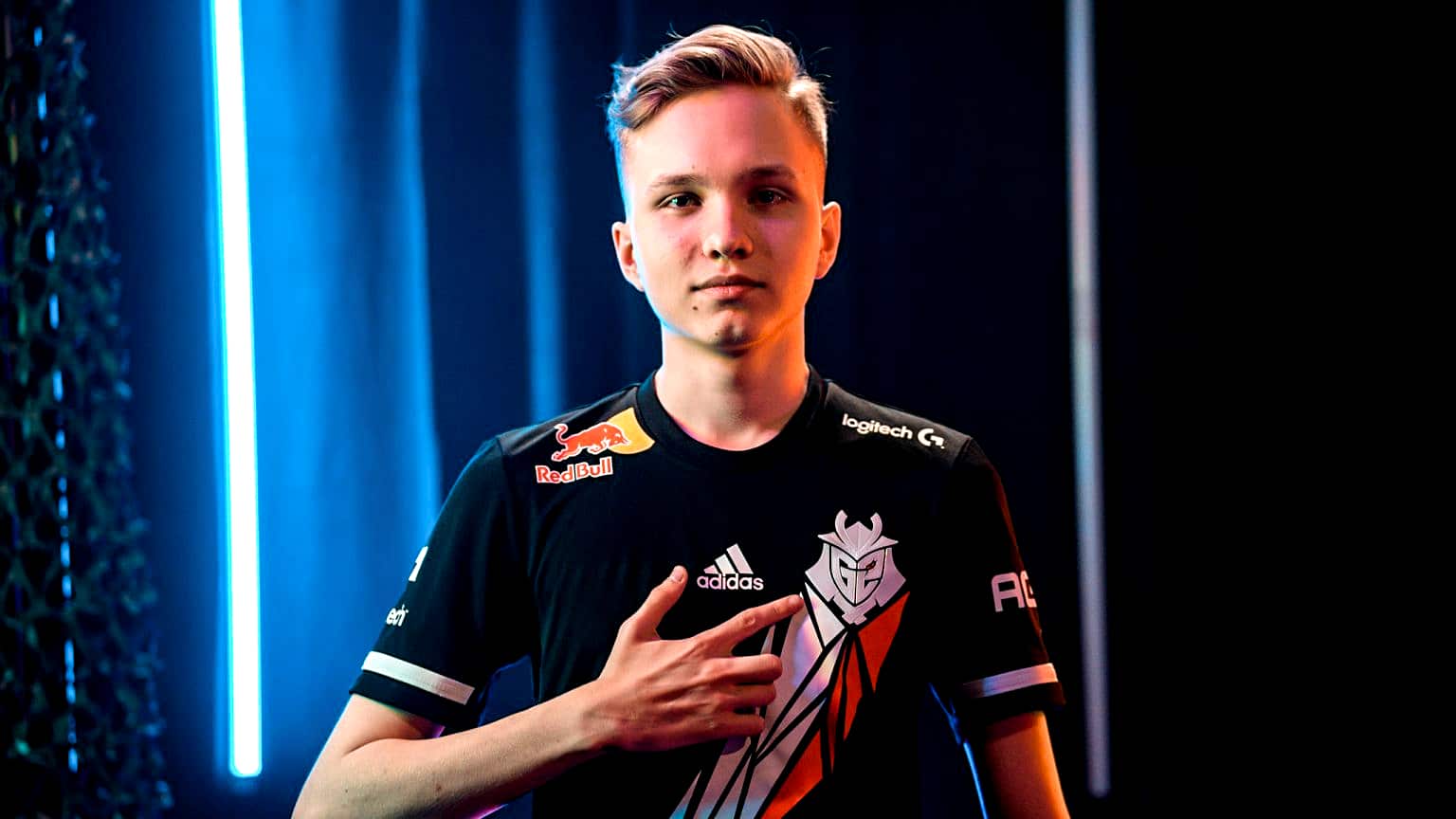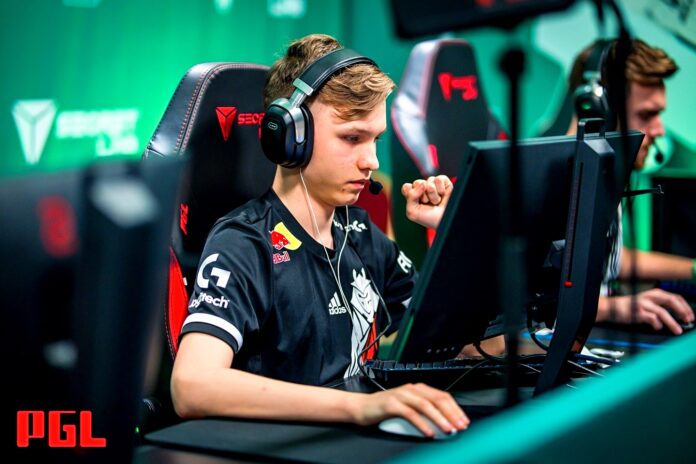G2 pro m0NESY successfully exploits the smoke bug on Mirage during PGL Major Antwerp 2022, forcing Valve to hotfix it. Plays like this have history in Counter-Strike: Global Offensive. Our top 5 most controversial exploits of the Esports title.

Legendary moments like Marcelo “coldzera” David’s AWP jumpshot will always be remembered by CS:GO fans. The same goes for the biggest exploits in the game, with which the pros were able to gain an unfair advantage at Major events.
Smoke bug on Mirage – m0NESY at PGL Major Antwerp 2022
Ilya “m0NESY” Osipov has provided the next big exploit on the big stage in CS:GO history during the PGL Major Antwerp 2022. The scenario has occurred second round match of Legends Stage between G2 Esports and Imperial Esports. There, the 17-year-old G2 star used a smoke bug to see his opponents on Mirage’s Window position, although he himself was invisible behind the smoke cloud.
WTF @CSGO pls fix this bug pic.twitter.com/cMB9hr9jBL
– João Vitor Delfino (@pigofps) May 15, 2022
The bug came about because a second smoke grenade was placed on top of the already active smoke. This created a free field of vision for m0NESY on the CT side in the lower right corner, in order to subsequently take two opponents out of the game. However, these were demonstrably unable to see him.
Developer Valve reacted to the incident one day later and removed the smoke bug. Thus, it is no longer possible to perform this one-way smoke, which caused a lot of discussion in the CS:GO scene. Meanwhile, a penalty for m0NESY is not expected. Previously, the players of G2 Esports had inquired whether the bug was allowed to be used. According to m0NESY, they were already allowed to use this exploit in the RMR qualifiers.
Olofboost – Probably the most famous exploit since CS:GO has been around
In contrast to the brand new controversy surrounding m0NESY’s Smoke Bug, the legendary Olofboost reached its very own hemisphere among exciters more than eight years ago. At DreamHack Winter 2014, now legend Olof “olofmeister” Gustafsson turned the CS:GO world on its head.
The Swede demonstrated a never-before-seen boost on the CT side of Overpass with his Team Fnatic in the quarterfinals against Team LDLC. On the A-Spot, olofmeister jumped over the truck onto an already boosted teammate and was able to overlook a large part of the map from there. With the help of this, he was able to take out the opponents with targeted scout and AWP shots.
Thanks to the boost, Fnatic turned a 3:13 deficit into a 16:13 victory. However, this extraordinary play had a heavy aftermath. Professionals as well as experts debated about the scene, whether this was even permissible. After all, olofmeister’s boosting teammate Freddy “KRIMZ” Johansson was practically standing on an invisible edge, which is also known as “pixel walking” and is illegal in CS:GO.
Crouch Jump Bug – BIG sees you, you don’t see BIG
The German organisation BIG showed strong performances in 2017. At the PGL Major Krakow, the Berliners even made it to the playoffs, but were narrowly defeated by eventual finalists Immortals 2-1 on maps in the quarterfinals. Along the way, however, the so-called “Crouch Jump Bug” played a major role, allowing enormous advantages.
How the bug worked: A player stands crouched (Crouching) behind a wall that is only slightly taller than the player character. The player jumps up and releases the crouching button during the jump. This allows the player to see as much as a normal jump. However, the opponent cannot detect the bug user. This technique has thus constituted a kind of legal wallhack.
BIG showed how powerful this Crouch Jump Bug can be right at the start of the Major event on 16 July 2017 in the first round match against FaZe Clan. On the map Inferno, it is possible to look over the wall to catch a glimpse of Ts charging. The same applies to the wall on the A-Site. For other maps like Cache and Overpass there were also several possibilities to use this bug for advantageous information gathering.
LDLC lodged a protest immediately after the match. Furthermore, an additional shitstorm on Twitter caused further attention, which publicly questioned the legality of this exploit. The following day, the tournament director ruled that the Olofboost was illegal and the match had to be replayed. However, Fnatic then voluntarily gave the victory to LDLC – also because their opponent dominated this crucial map immediately before the boost was used and was on the verge of winning. In the end, LDLC also won the Major event. But the legend of the Olofboost, born in this tournament, will remain one of the most special moments in CS:GO history.
We have agreed on a gentleman agreement between mouz and us, not to use the jump glitch in an abusive way.
– karrigan (@karriganCSGO) July 17, 2017
FaZe had decided not to use this Crouch Jump Bug after losing to BIG. All other teams also agreed afterwards to prevent further unfair situations in favour of the bug users. The professionals agreed together. Meanwhile, the organiser PGL had officially allowed the use. In the subsequent August patch, Valve finally removed this bug.
The Coaching Bug – A Long-Term Scandal
It wasn’t just players who caused an uproar, but also people from the back row. In August 2020, it was revealed that numerous coaches took advantage of a bug for years that gave them a clear view on a map spot
For those wondering how this coaching bug works, here is a short clip of me being bugged on mirage, A spot. You can pick any location on the map you want. And yes, you can rotate the camera angle as much as you want. pic.twitter.com/C0CdDV9zXi
– Michal Slowinski (@michau9_) August 31, 2020
With the help of this so-called coaching bug, coaches as spectators not only watched their own players, but were stuck at a certain position when it was applied. Nevertheless, the camera can still be rotated, which means that this bug is mainly used at important positions such as bomb spots to find out the positions of the opponents.
The Esports Integrity Commission (ESIC) has initially banned 37 coaches in the course of this, including well-known ones such as Heroic’s Nicolai “HUNDEN” Petersen. This also means that the affected persons are no longer allowed to take part in official Valve tournaments, which mainly means major events. Despite the bug removal, a new case emerged almost a year later.
ESIC ISSUES CHARGES AGAINST THREE COACHES RESULTING FROM THE HISTORICAL SPECTATOR BUG INVESTIGATION
ESIC will continue to notify the balance of the Spectator Bug Variant charges following this statement.
Read on our website: https://t.co/gCXEPliQYo pic.twitter.com/uGL8dwevJT
– ESIC (@ESIC_Official) May 6, 2022
Even in 2022, the coaching bug is still an issue. In the course of further ESIC investigations, it was found that coaches have used various Spectator bugs to gain unauthorised views of the map since 2016.
Although no case was documented during a major event, this bug scandal has far-reaching implications for the CS:GO scene and those very highlight tournaments. In offline events, coaches have significantly fewer opportunities to sneak an information advantage on an additional monitor.
Quadruple T-Boost on Overpass by Astralis
This exploit is far less spectacular, but legally and tactically an asset. The map Overpass offers some possibilities due to the height differences between A- and B-Site, as the Olofboost has already shown. The best teams are taking advantage of this today as well.
During the 2019 StarLadder Berlin Major, Astralis impressively showed how beneficial a quadruple boost in Overpass’ T-Spawn can be. On their way to a fourth Major title, the then superteam from Denmark played against perennial rivals Team Liquid in the quarterfinals. In the process, AWP star Nicolai “dev1ce” Reedtz landed a clean shot on Jonathan “EliGE” Jablonowski, who was under the CT spawn on Heaven.
The boost even requires all five players: while the first three can very easily line up next to the banister, the other two must first boost themselves on the banister. The top one of the two players then jumps onto the already existing three-man boost and thus gets an excellent view of the part between CT-Spawn and B-Site.


